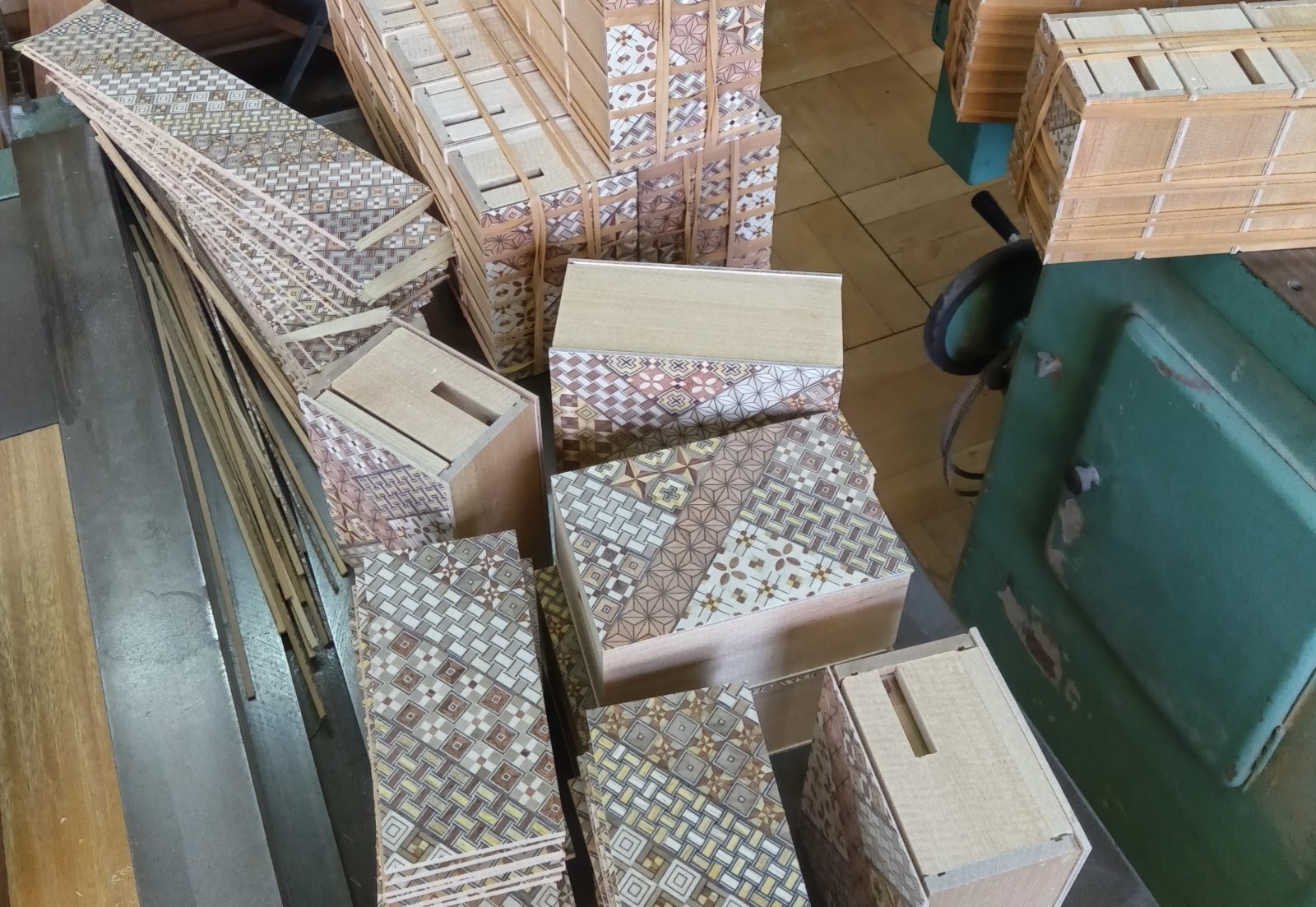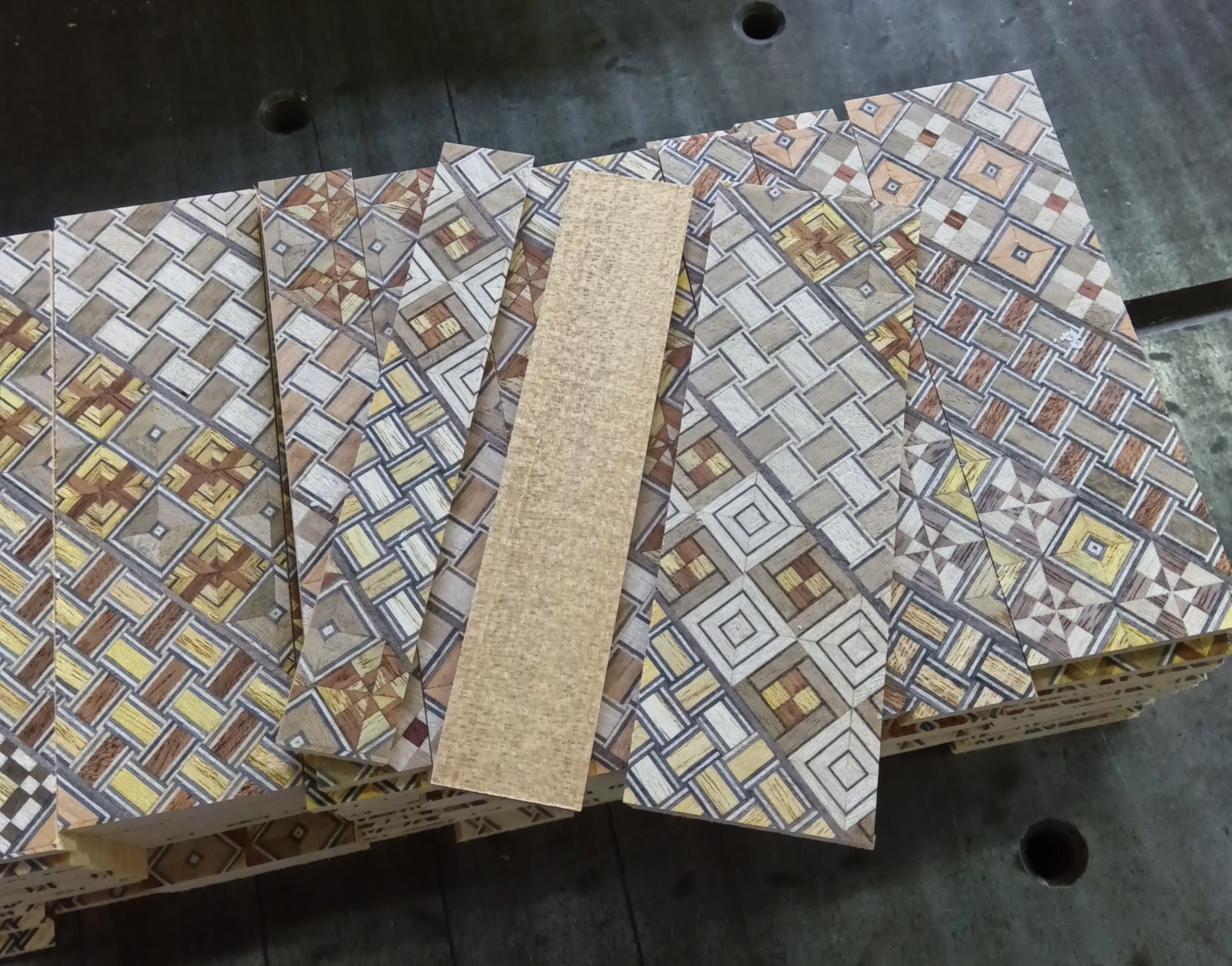Kannuki panels
Today is Monday, but it is a holiday in Japan. It is a national holiday, celebrating the Emperor’s Birthday. Since I live near Hakone, a famous hot spring resort, I saw many tourists heading there today. On the other hand, since many businesses are closed, the regular roads are not crowded. On days like this, I don’t come to the workshop early in the morning as usual. Instead, I arrived a bit later. A strong cold wave is expected to keep temperatures low until around tomorrow, so mornings are still tough 😅
Today, I worked on attaching the "Kannuki(slide keys)" panels for the 5-sun 27-steps puzzle box. Over the past few days, I had already finished attaching the side panels, so today's and tomorrow's work will focus on the Kannuki panels.Some of the 4-sun 27-steps puzzle boxes I made recently were affected by the drying conditions over the past few days. To prevent the same issue, I made some adjustments to the 5-sun boxes to reduce the impact. Large weather changes during the production period can significantly affect the boxes before painting, and this time, I experienced that once again.
The Kannuki panel is divided into three parts. Among them, the part commonly referred to as the “Kannuki” is the narrow, sliding section in the middle. This section is attached to a small wooden piece inside, called the “Botchi” (about 2.3 cm this time). The Botchi moves within the internal mechanism, increasing the number of steps required to open the puzzle box.Because of this, the Kannuki is only attached to the Botchi, meaning the bonding area is very small and not firmly fixed. As a result, it is easily affected by outside air, causing it to warp or shrink. Various techniques are used to prevent this. Since the weather is currently very dry, I reviewed these techniques again to prevent the panels from warping.
I will continue this work tomorrow, but at the same time, I plan to start preparing for the next project. Once I decide on the next task, I will write about it here tomorrow.
Today, I worked on attaching the "Kannuki(slide keys)" panels for the 5-sun 27-steps puzzle box. Over the past few days, I had already finished attaching the side panels, so today's and tomorrow's work will focus on the Kannuki panels.Some of the 4-sun 27-steps puzzle boxes I made recently were affected by the drying conditions over the past few days. To prevent the same issue, I made some adjustments to the 5-sun boxes to reduce the impact. Large weather changes during the production period can significantly affect the boxes before painting, and this time, I experienced that once again.
The Kannuki panel is divided into three parts. Among them, the part commonly referred to as the “Kannuki” is the narrow, sliding section in the middle. This section is attached to a small wooden piece inside, called the “Botchi” (about 2.3 cm this time). The Botchi moves within the internal mechanism, increasing the number of steps required to open the puzzle box.Because of this, the Kannuki is only attached to the Botchi, meaning the bonding area is very small and not firmly fixed. As a result, it is easily affected by outside air, causing it to warp or shrink. Various techniques are used to prevent this. Since the weather is currently very dry, I reviewed these techniques again to prevent the panels from warping.
I will continue this work tomorrow, but at the same time, I plan to start preparing for the next project. Once I decide on the next task, I will write about it here tomorrow.

